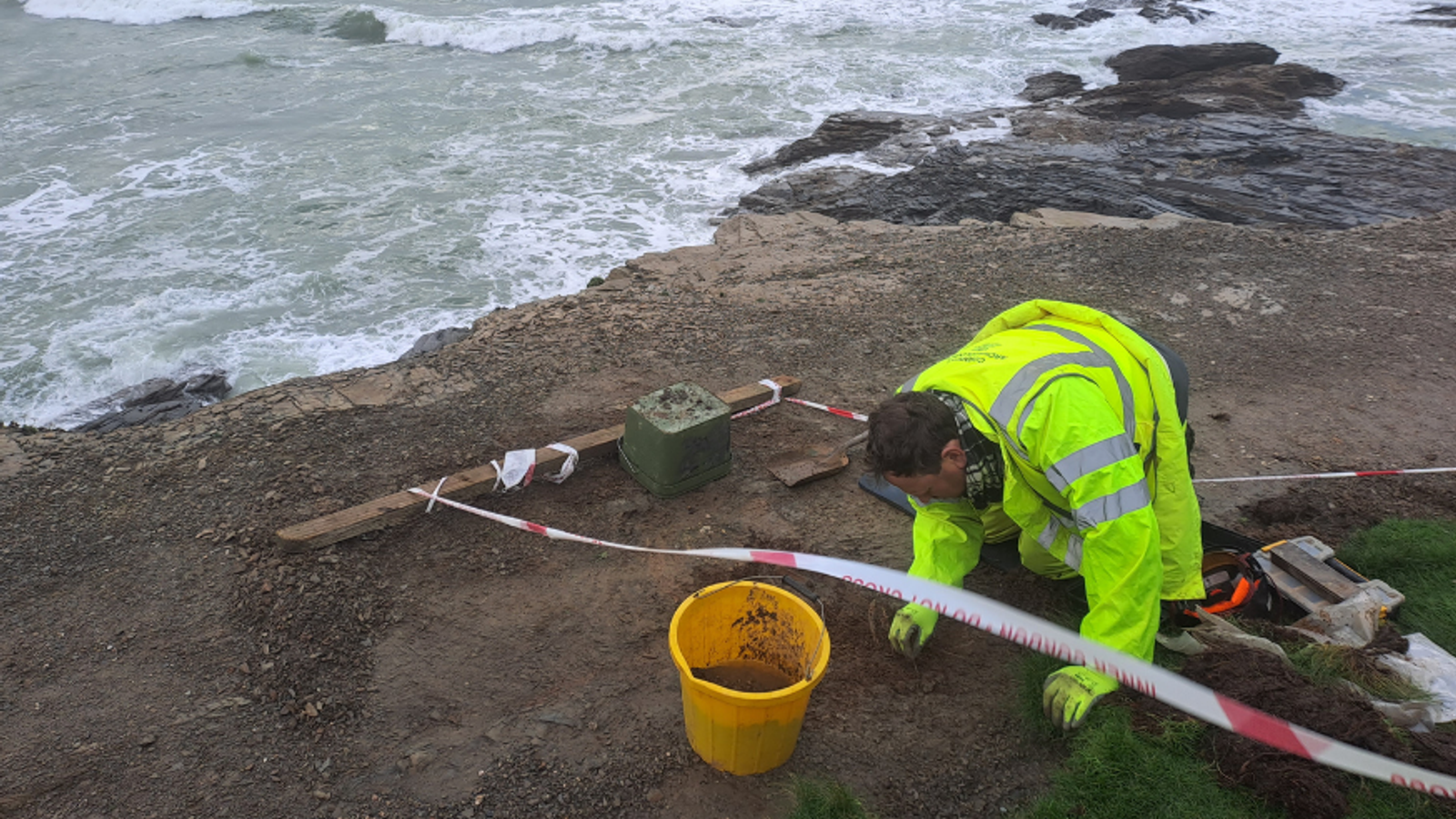Human remains found on the north coast of Cornwall may have been from a shipwrecked sailor who died more than 200 years ago, experts have said.
Police were alerted to the remains after the bones were discovered on a footpath near Trevone, a village outside the popular tourist town of Padstow.
After forensic teams assessed that the human remains were historic, the case was passed to experts from Cornwall Council’s archaeological unit.
Now experts from the team say their initial investigations have suggested that the bones could belong to a sailor and may date back to the 18th or 19th century.
Ann Reynolds, from the council’s rural historic environment team, said: “Initial investigation has shown that the remains were of an adult, cut off just above the knees, potentially by the construction of an adjacent hedge.
“Two bones have shown heavy wear patterns, suggesting an exceptionally well-developed upper body muscle mass. This may indicate a life of hard labour, pulling, pushing and lifting.
“Given the location of the remains on the cliff and near the notoriously dangerous approach to Padstow Harbour, it is possible that they are of a shipwrecked sailor, and if so, potentially date to before 1808, after which the Grylls Act decreed that drowned remains washed ashore should be buried in consecrated ground.”
Family of 87-year-old man forced to build him shelter out of football goal after 15-hour ambulance wait
Thousands of crabs swarm St Ives beaches as sea temperatures rise
Shark attacks snorkeler in ‘very scary’ incident off British coast – but victim able to walk away
The Grylls Act, or the Burial of Drowned Persons Acts 1808 and 1886, is an act of parliament that decrees all bodies washed ashore from the sea should be buried in consecrated ground.
Prior to the act, remains were buried unceremoniously on the nearest cliff to the spot the deceased came ashore.
The bill was drafted by Thomas Grylls, a Cornish solicitor, following the wreck of the frigate HMS Anson off Loe Bar in 1807.
Following the initial assessment, the team will now carry out a fuller analysis of the remains, which will take place before reburial.
Councillor Martyn Alvey, portfolio holder for environment and climate change at Cornwall Council, said: “I’d like to thank everyone who has been involved in this excavation and shown such care while carrying out their work.
“I hope that we can discover more about this individual before they are laid to rest once more.”
The human remains were discovered in an area overlooking Newtrain Bay, known locally as Rocky Beach due to its large slab formations and series of rock pools.
Cornwall is believed to have more than 6,000 shipwrecks around its coastline, more than any other area of the UK.










